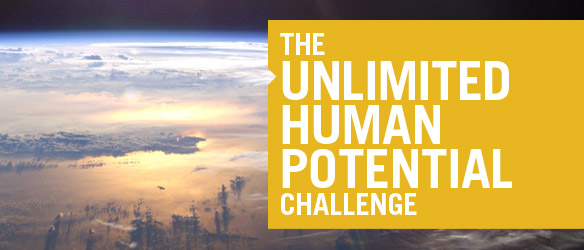Unleashing Human Potential—Wherever it Exists
When it comes to building management and business models that are fit for the 21st century, one of the fundamental challenges is developing organizations that are capable of discovering, nurturing, aggregating, and appropriately rewarding contributions from employees, customers, suppliers, and other stakeholders across boundaries.
That’s a two-part problem: organizations that are built to thrive in the Innovation Economy must focus both on unleashing human capacity—designing environments and systems for work that inspire individuals to contribute their full imagination, initiative, and passion every day—and on aggregating human capability—leveraging new social, mobile, and digital technologies to activate, enlist, and organize talent across boundaries.
Unfortunately, the ability to rapidly reconfigure and leverage internal and external resources isn’t in the DNA of most companies. That’s because the broad majority of organizations operate according to industrial-era practices and principles designed to maximize standardization, specialization, predictability, and top-down authority. Most organizations are prisoners of two persistent and pernicious models of organizing work and structuring business: the pyramid and the value chain.
The good news: the old paradigms are already crumbling. With the rise of new technologies (digital, mobile, social, and Big Data) and the principles they have unleashed (such as transparency, collaboration, meritocracy, openness, community and self-determination), top-down structures are giving way to more collaborative and social approaches, and the static value chain has exploded into a dynamic value network that knows no boundaries.
Today, employees in every kind of organization are enlivened by unprecedented levels of openness, autonomy, participation, and flexibility. Global cement and construction material maker CEMEX built a global collaboration platform, Shift, to involve some 40,000 employees, at every level around the world, in setting direction for the company. In just a few years, Shift has spawned hundreds of active communities of passion with real power to drive decisions and make an impact in the organization. At the same time, customers have become more active (and powerful) contributors, collaborators, critics and evangelists. In some cases, customers or “users” are the company. Think of Valve Software’s robust platform for user-driven development and community, Steam. The most vibrant companies are re-imagining their boundaries to connect with a web of partners and stakeholders and facilitate new forms of social production (LEGO is experimenting with a portfolio of approaches—from its global network of free agent designers to its user-driven innovation platform, CUUSOO).
Now, more than ever before, leaders must recognize the value of individual contribution. Individual ingenuity, initiative, and passion are the fuel of the Innovation Economy. Yet, these deeply human qualities cannot easily be corralled, commanded or “ordered up” from on high. They must be properly invited, nurtured, and inspired. This means that organizations must become increasingly inventive in devising new models of engagement that emphasize the power of the individual over command and control. And it means that the work of leadership must increasingly focus on energizing and enlarging the community rather than managing it from the top-down.
These new approaches and technologies are available to just about anyone—from global companies to emerging startups to individual innovators to citizen groups to cross-sector initiatives. That’s why we are launching the SAP Unlimited Human Potential Challenge—to unearth and celebrate the individuals and institutions who are working to create real value and to improve lives in a meaningful way.
We are seeking the most progressive practices and innovative ideas for unleashing and mobilizing human capability—wherever it exists. For example, how could an organization and its leaders:
- Invert the internal pyramid to create more autonomy, participation, and flexibility?
- Cultivate a dynamic value network by creating, energizing, and organizing a community of volunteers, customers, and/or independent agents?
- Give employees, external contributors, and other stakeholders a greater say in shaping the company’s most important decisions?
- Inject the voice of the customer and other relevant stakeholders into every decision, and to make the insights and observations of every individual—from edge to edge—matter?
- Demolish the rigid silos that constrain contribution, and enable employees, partners, suppliers, customers, and other stakeholders to engage with the institution on their own terms?
- Redefine the work of leadership to focus on energizing and enlarging the community—to shift from “boss” to “social architect”?
- Re-think its sources of “talent” and devise clever architectures of participation to discover, unleash and reward hidden genius?
Join the SAP Unlimited Human Potential Challenge—and share a real-world story or contributing a pioneering idea. Make the connection between unleashing human potential and the creation of real value in the world. Show us how your management hack or business model innovation contributes to a better run world for all.
Gary Hamel, Polly LaBarre and Michele Zanini are the co-founders of the MIX (Management Innovation eXchange). You can learn more about the SAP Unlimited Human Potential Challenge here. Help us spread the word via Twitter #sapmprize.

You need to register in order to submit a comment.